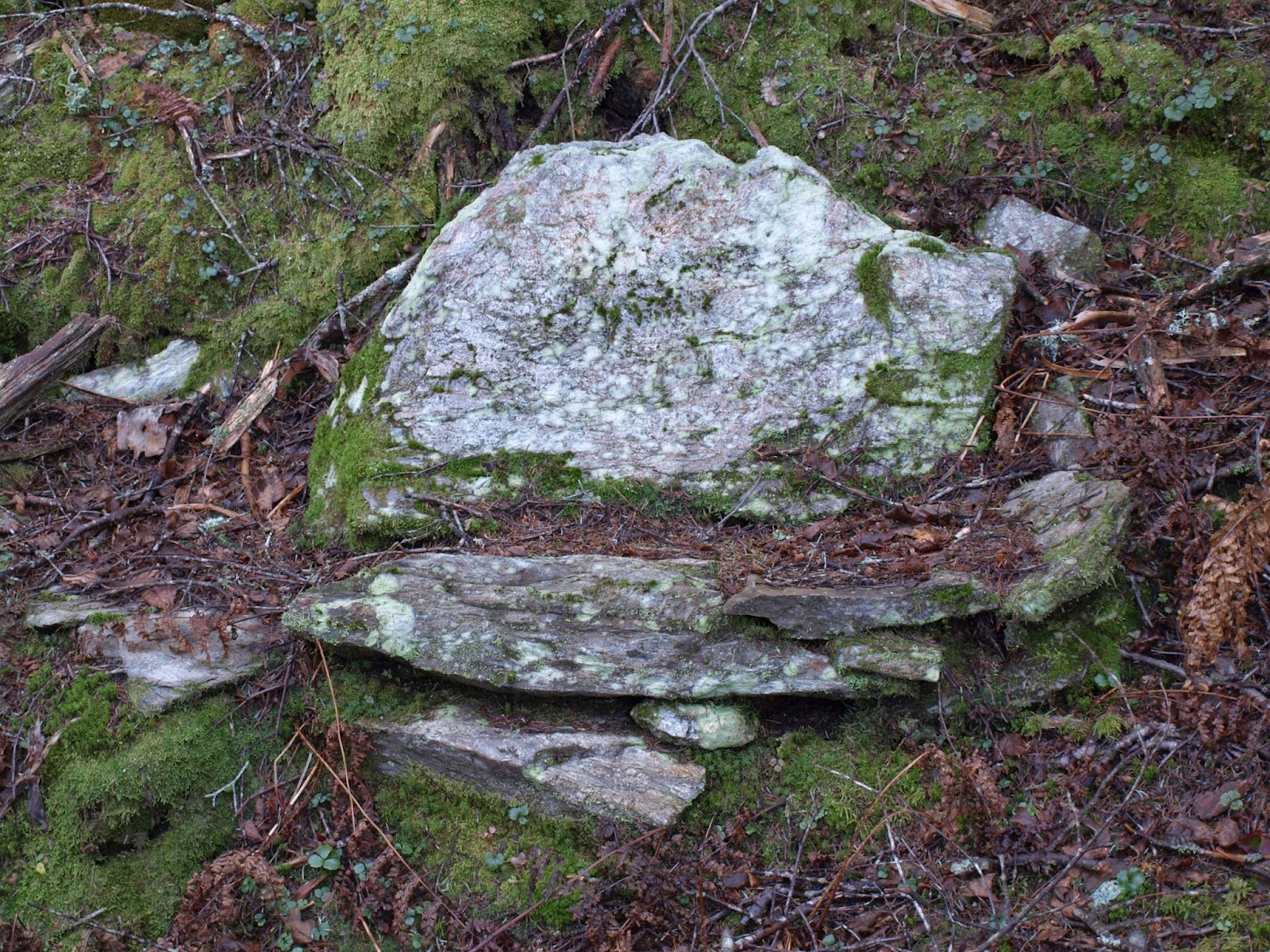right on the apex of the NE summit of 12er Mt. Peck,, exactly on the Continental Divide.
 |
| Pikes Peak through the "window" |
The small opening makes it easier to see detail at a specific point. This would be useful for spotting smoke signals or firelight from predetermined locations. I call this a "View Guide".
It's probable that the "table rock" that creates this portal got there by geologic means. It isn't so big, however, that it couldn't have been levered into place by several determined individuals.
This is just one of a number of unusual stone features on Mt. Peck that we'll get into in another post.
 |
| The Hallway at "The Dugout" |
The other side of "The Dugout", looking over the top of the Hallway.
The combination of this depression and the Hallway are suggestive of a ruined habitation. At least I've taken shelter there!
If you look up from the Hallway, there is a small "View Guide" at the top of a rough stair:
 |
| Uncompahgre Peak thru the View Guide |
I've noticed several of these peek-through rock openings along this section of ridge. they all look to the east, west, or both- but not north or south along the ridge. Although they could be naturally occurring, the context of nearby documented ruins increases the possibility that they are human created. The prehistoric telegraph?
 |
| View guide at the top of the Hallway wall |

















